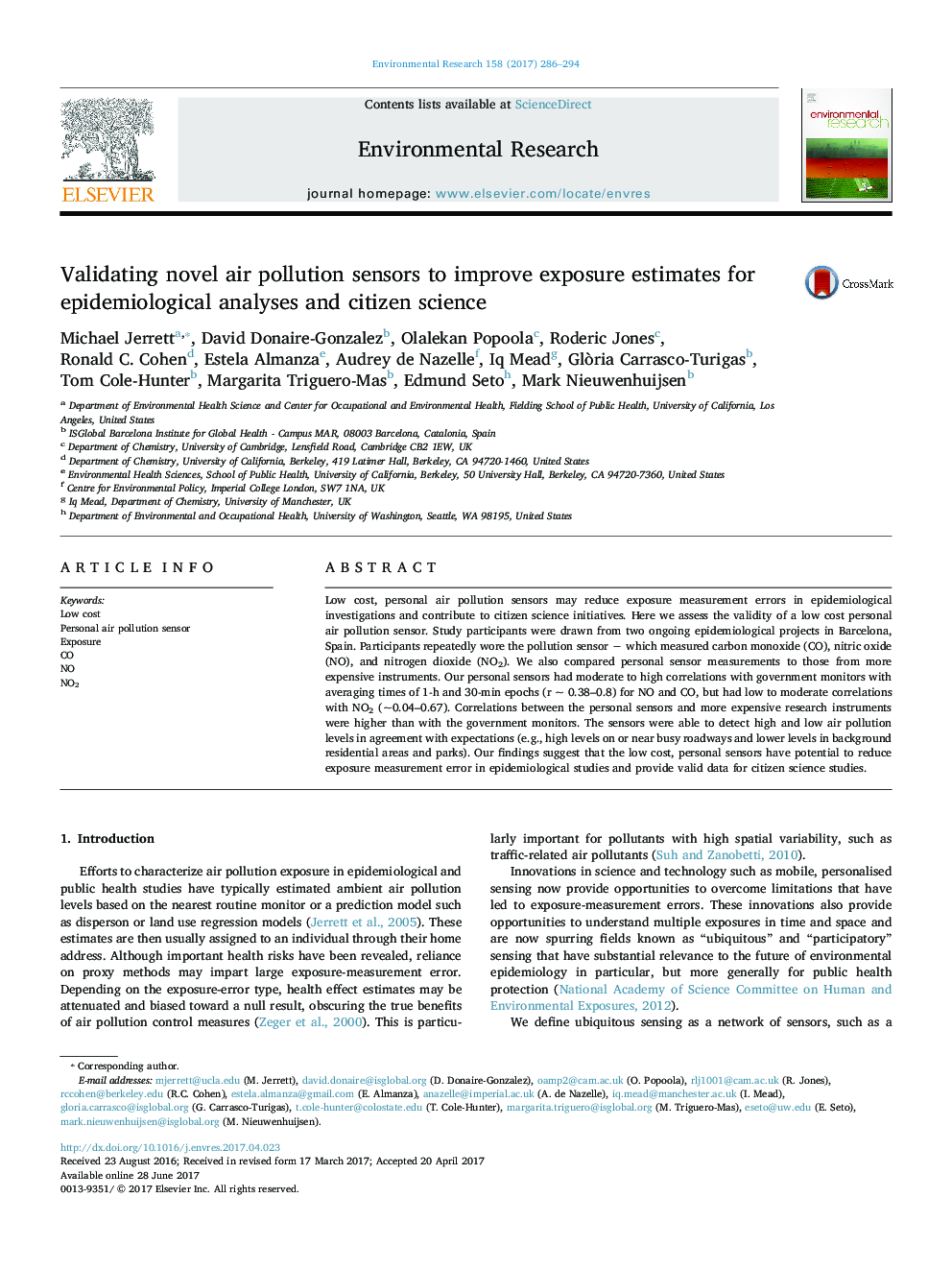| Article ID | Journal | Published Year | Pages | File Type |
|---|---|---|---|---|
| 5756366 | Environmental Research | 2017 | 9 Pages |
Abstract
Low cost, personal air pollution sensors may reduce exposure measurement errors in epidemiological investigations and contribute to citizen science initiatives. Here we assess the validity of a low cost personal air pollution sensor. Study participants were drawn from two ongoing epidemiological projects in Barcelona, Spain. Participants repeatedly wore the pollution sensor â which measured carbon monoxide (CO), nitric oxide (NO), and nitrogen dioxide (NO2). We also compared personal sensor measurements to those from more expensive instruments. Our personal sensors had moderate to high correlations with government monitors with averaging times of 1-h and 30-min epochs (r ~ 0.38-0.8) for NO and CO, but had low to moderate correlations with NO2 (~0.04-0.67). Correlations between the personal sensors and more expensive research instruments were higher than with the government monitors. The sensors were able to detect high and low air pollution levels in agreement with expectations (e.g., high levels on or near busy roadways and lower levels in background residential areas and parks). Our findings suggest that the low cost, personal sensors have potential to reduce exposure measurement error in epidemiological studies and provide valid data for citizen science studies.
Related Topics
Life Sciences
Environmental Science
Health, Toxicology and Mutagenesis
Authors
Michael Jerrett, David Donaire-Gonzalez, Olalekan Popoola, Roderic Jones, Ronald C. Cohen, Estela Almanza, Audrey de Nazelle, Iq Mead, Glòria Carrasco-Turigas, Tom Cole-Hunter, Margarita Triguero-Mas, Edmund Seto, Mark Nieuwenhuijsen,
